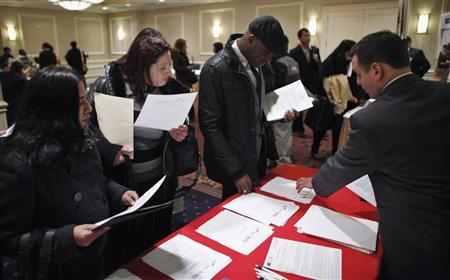Such, Jewish teens replaced love emails, adopting the development common in america at that time (p
Redownload tinder and you will sign up with the newest now unbanned phone number
janeiro 20, 2023Why don’t you join something similar to Clearscore and watch exactly what your own real credit score is actually?
janeiro 20, 2023The development regarding second knowledge, and you can broadening identification away from adolescence due to the fact a distinct stage from lives, offered the development of situations of this family (pp. 190–1). Ergo, working-class ladies, just who kept college or university sooner than center-class of them, found it much harder acculturate. Work you will sign up for acculturation, but it try will ethnically homogenous which considering fewer ventures than just college (p. 191). Females of all groups appreciated some of the exact same facts, each other teams invested much time one of nearest and dearest, and also the period witnessed the growth ‘from a broadly seen childhood culture’ (p. 191).
Notably, communities dedicated to Americanizing Jewish teens including tried to include options to mingle (p. 219). That it contributed far Jewish youthfulness to participate normal Western affairs, however, to take action ‘within the a great Jewish environment’ (p. 213). When you’re Jewish people had non-Jewish class mates, family, and you can co-specialists, it rarely old her or him; during the change of the 100 years, merely several % intermarried, and also by the fresh 1940s only about three %. Evidently Jewish teens recognized this top priority even though situations such as for example class, degree, and you may ethnicity impacted socializing and you may relationship choices, religion was the crucial you to definitely (pp. 219–20). So you can remind endogamy, this new Jewish neighborhood supported items one to assisted teenagers and you can female satisfy. This type of activities tended to blend customs and you can modernity; they certainly were only Jewish, however, tend to unchaperoned (pp. 221–2). Even if simply for co-religionists, Jews’ courtship activities was basically if not quite similar to those out of People in the us of their group (p. 223). 224). Though highly personal, the fresh emails were reflective from ‘the intimate ideals forming doing courtship and you will marriage within turn of one’s century’ (p. 225). Classification, studies, and you can relatives history starred secret part in daily life options; Jewish teens commonly decided to accept, instead of refuse traditions and you can parents’ lives (p. 232).
Overall, this is a good guide. They discusses female and you can women that will score quicker focus fundamentally, and you may focuses a good deal on non-immigrants, a welcome addition to other knowledge. The language is far more thematic than just chronological, and you can, as a result, tends not to focus on change over time. All of the information relate genuinely to training in one way or any other-certified, casual, or spiritual. Perhaps a more condensed glance at training might have enabled Klapper giving more idea regarding certain clubs, functions, and personal existence. This lady treatment of her or him leads the person to need understand even more. After that, this type of arenas would offer even more understanding of category, intercourse, business economics, and household members.
She contends convincingly you to Jewish kids common popular characteristics despite time. Among these was indeed a push to face out; of many women wished to be outrageous versus leaving areas of community it respected (pp. 34, 35). The girl awareness of classification adds nuance to the comprehension of acculturation and her research now offers an important contribution to both Jewish and you may Western records.
Klapper’s publication deepens the comprehension of the fresh new lifestyle out of Jewish teenagers in addition to their link to the introduction of a bigger Western Jewish society
Gendered presumptions have been most important. For example, middle- and you can upper-class female studied cooking in school, while they originated from home in which maids performed the new washing and also the female couldn’t get ready (p. 84). Brand new vocational importance of numerous universities, especially for the functional classification, had a tendency to reinforce ‘split up school skills of people and you may girls’ (p. 90). Males were prone to stay static in college or university than simply lady and you may despite an equivalent schools, boys’ and you can girls’ curriculum have a tendency to differed (p. 189). People whom confronted traditional intercourse limitations usually discovered there are effects. Individuals with school values think it is difficult to fulfill relationship applicants, leading particular to ask in the event that ‘Jewish doctors, solicitors, or any other elite group [were] also busy to enjoy the firm of females who aren’t just pretty and in addition smart?’ (p. 103, n. 152). Worried parents were unwilling to let de- a great deal more physically harmful so you’re able to spiritual and you can social traditions’ (p. 103). Gendered standard in addition to suffused casual informative apps. The educational Alliance’s David Blaustein believed it his duty to arrange men having citizenship and people to own motherhood (p. 118).
Faith are crucial, played a critical part on formation of girls’ Jewish name, and you will tended to bolster family unit members relationship, also certainly one of families have been maybe not ritually attentive
Klapper discusses an inescapable generation gap; whenever you are females flocked so you’re able to categories, the facts out of immigrant life precluded their parents’ involvement. Certain parents accepted the consequences off acculturation as they believed that such as for example a course designed higher potential, in the event female you will expand other than friends (pp. 130–2). Young women either found on their own caught within public direction regarding society and you can individualistic orientation away from adaptation.
The latest erican try appear to perhaps not best and religion did place Jewish female other than low-Jews. Still, the prices and you may behaviours regarding American girlhood was indeed similar sufficient to those  of Jewish girlhood you to conflict stayed minimal and you may ‘are expected to develop as a result of group activities otherwise family relations structure’ (p. 190). Middle-class Jewish girls, specifically, you will definitely merge identities, and you may be involved in Western points and you may American styles with Jewish family relations and a Jewish sweetheart. Evidence suggests that tension did not decrease entirely; ladies remembered you to definitely Saturday night Sabbath properties you will compete with affairs like the senior high school debating people (p. 196).
of Jewish girlhood you to conflict stayed minimal and you may ‘are expected to develop as a result of group activities otherwise family relations structure’ (p. 190). Middle-class Jewish girls, specifically, you will definitely merge identities, and you may be involved in Western points and you may American styles with Jewish family relations and a Jewish sweetheart. Evidence suggests that tension did not decrease entirely; ladies remembered you to definitely Saturday night Sabbath properties you will compete with affairs like the senior high school debating people (p. 196).
